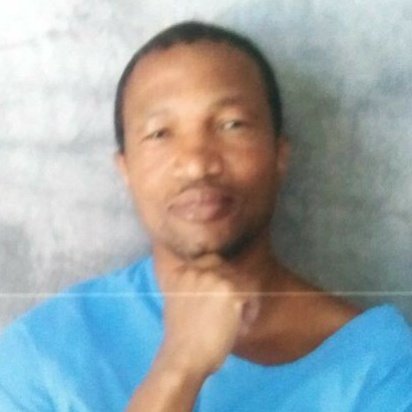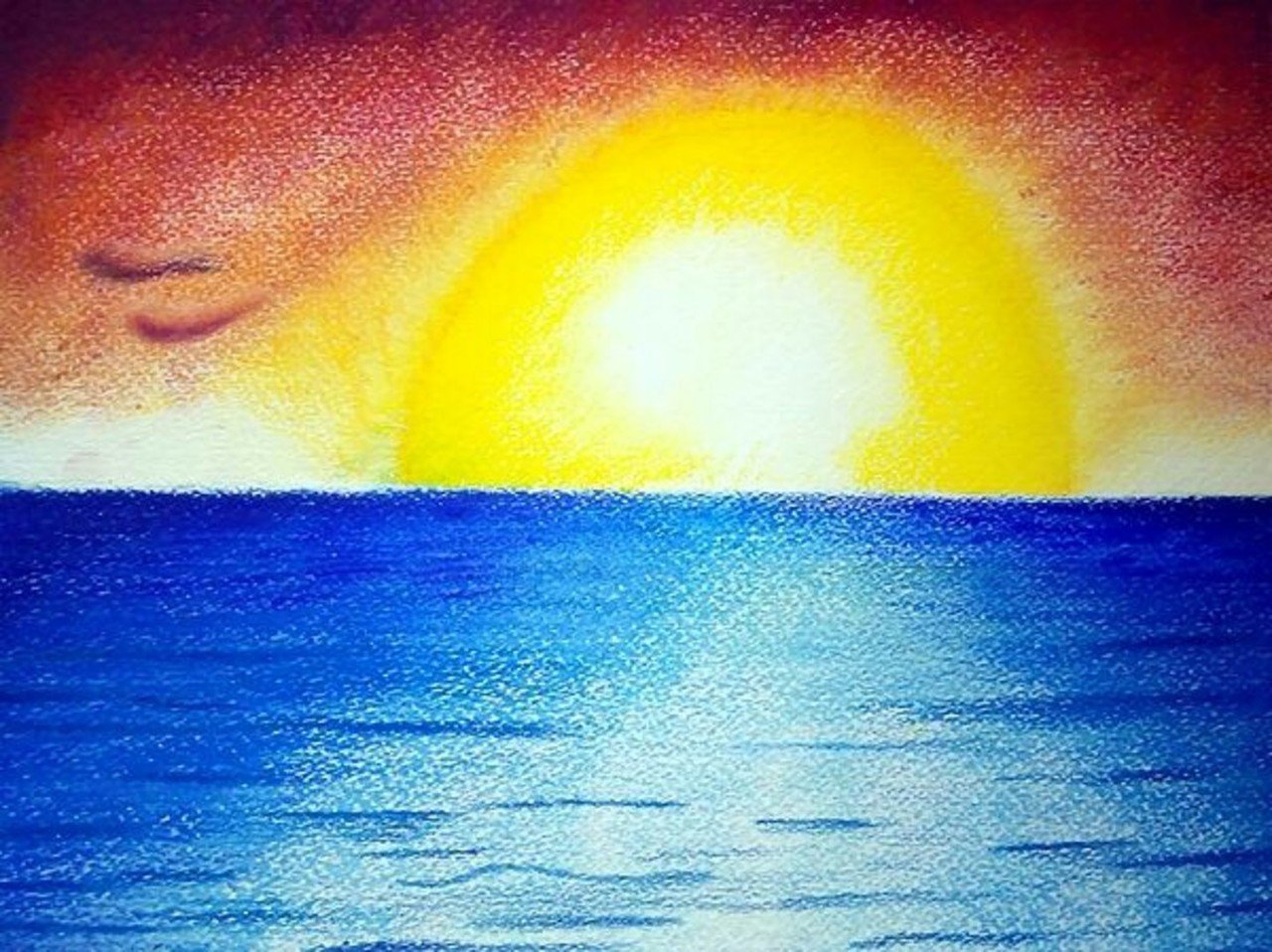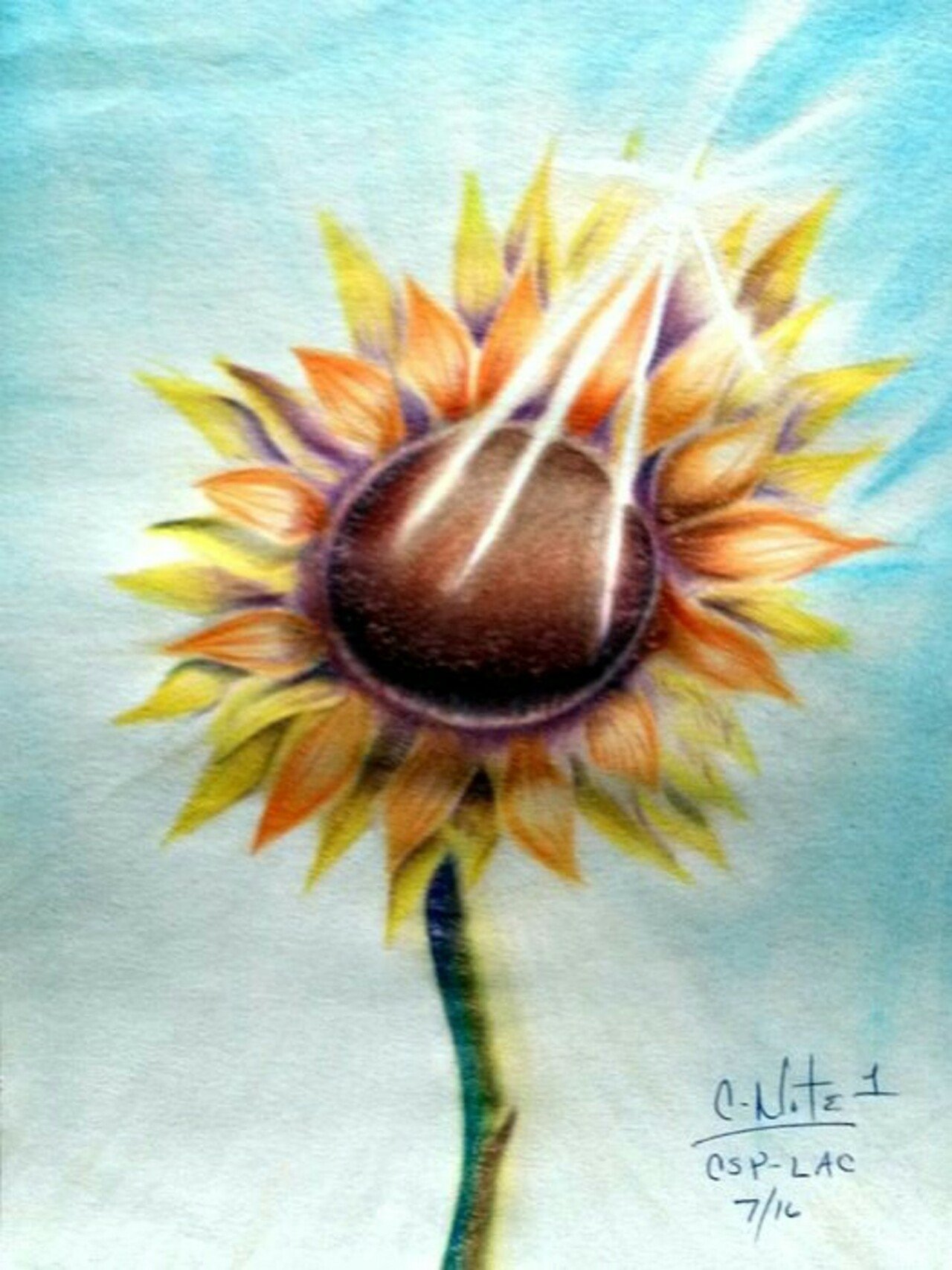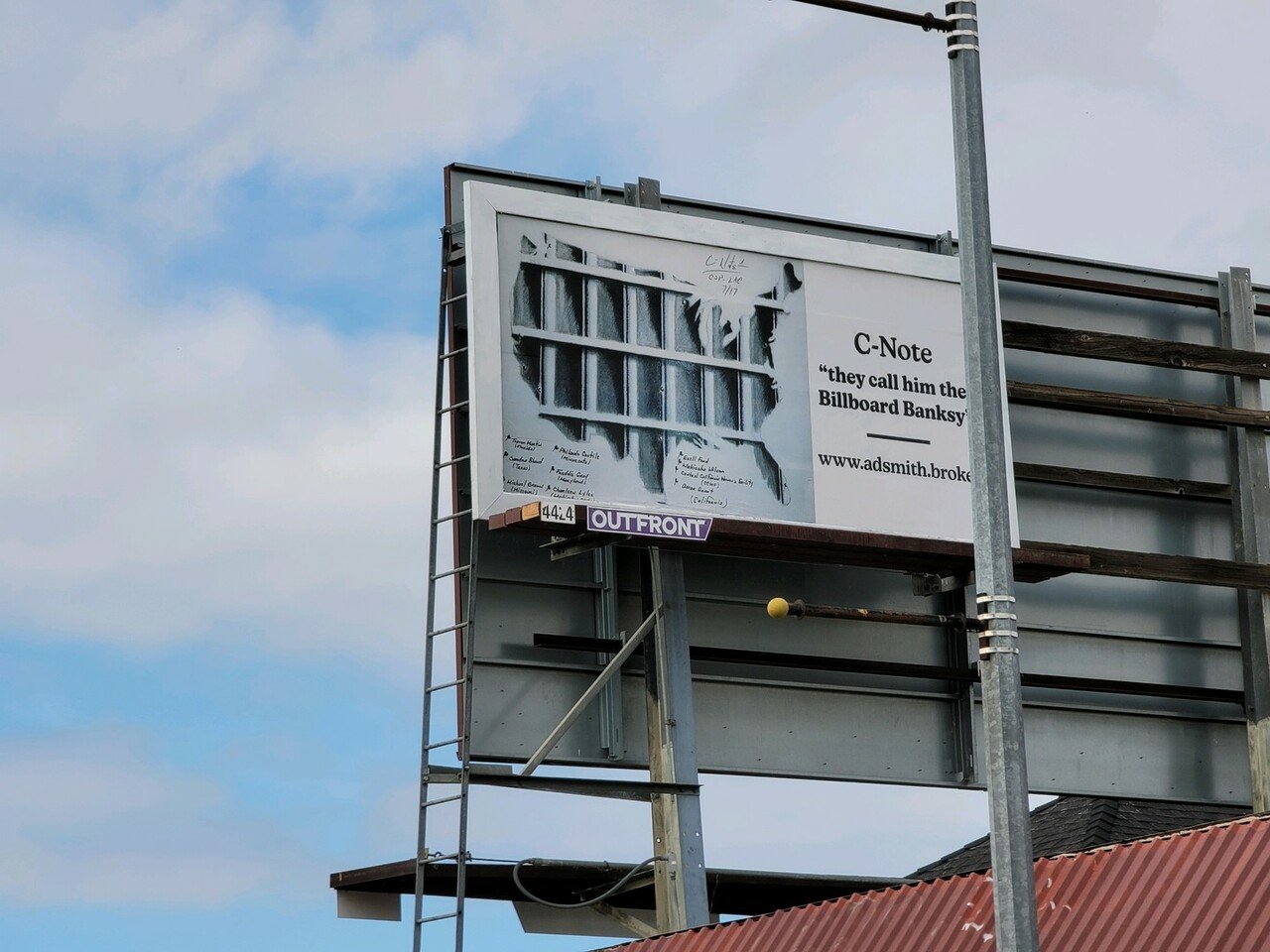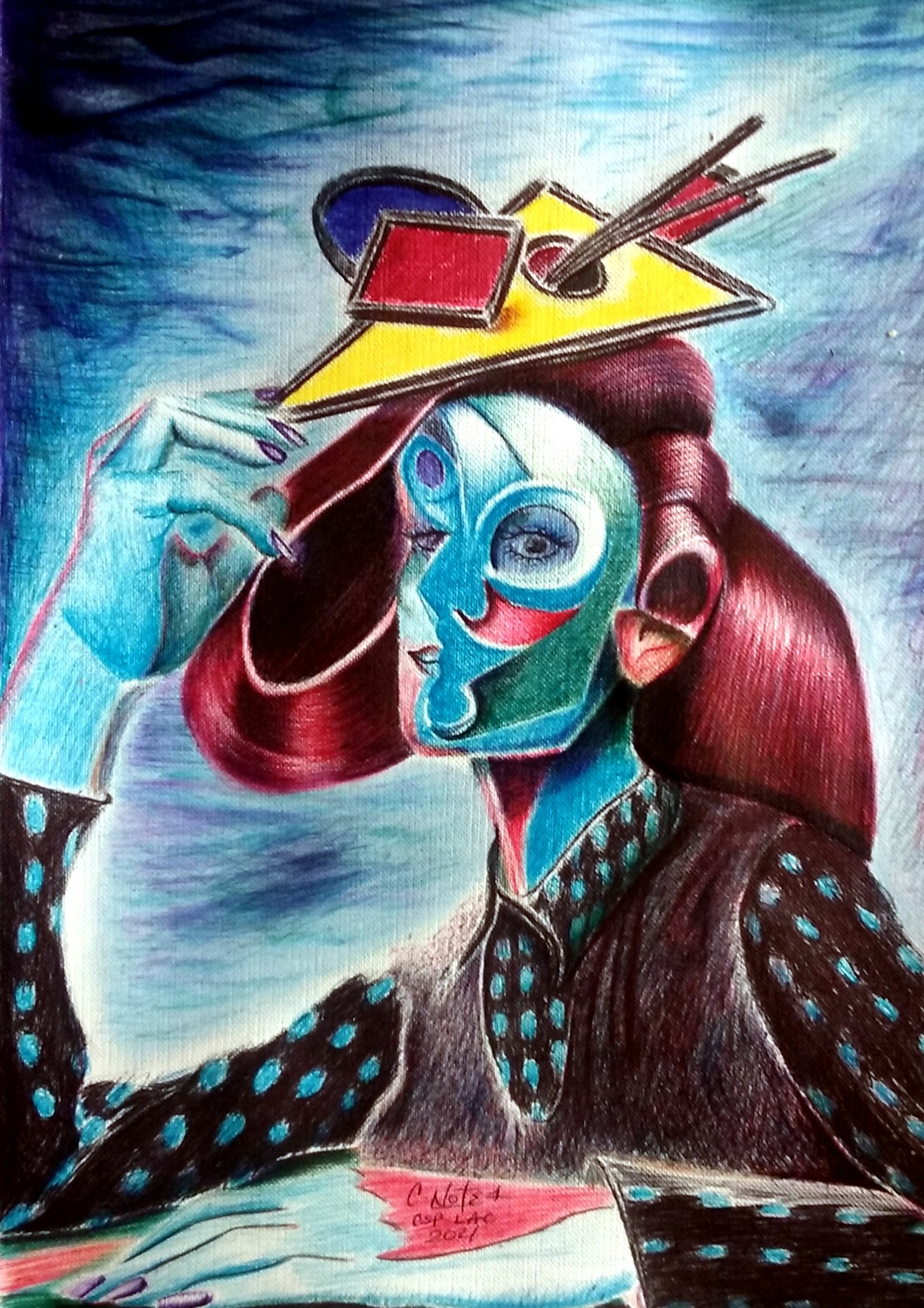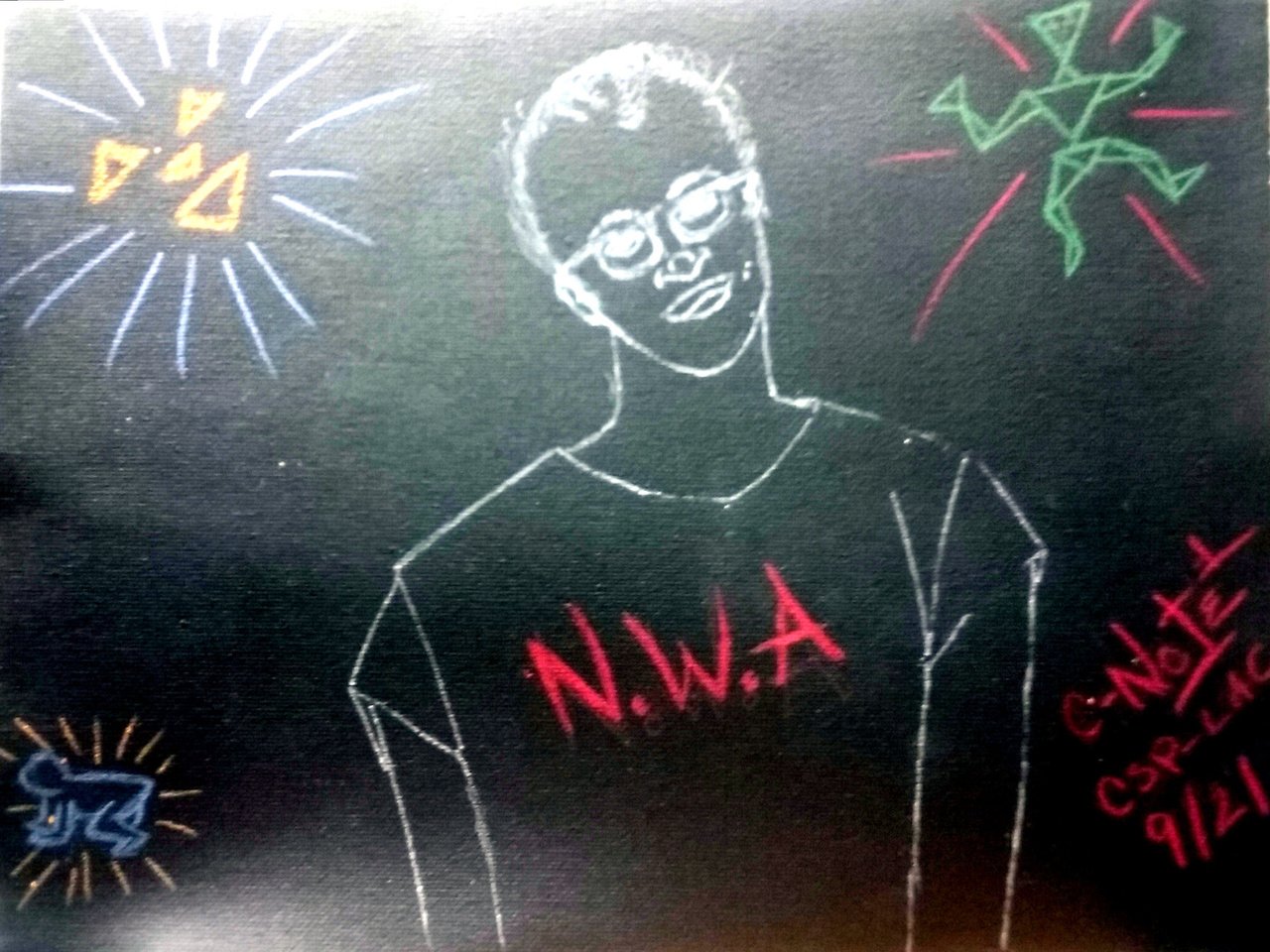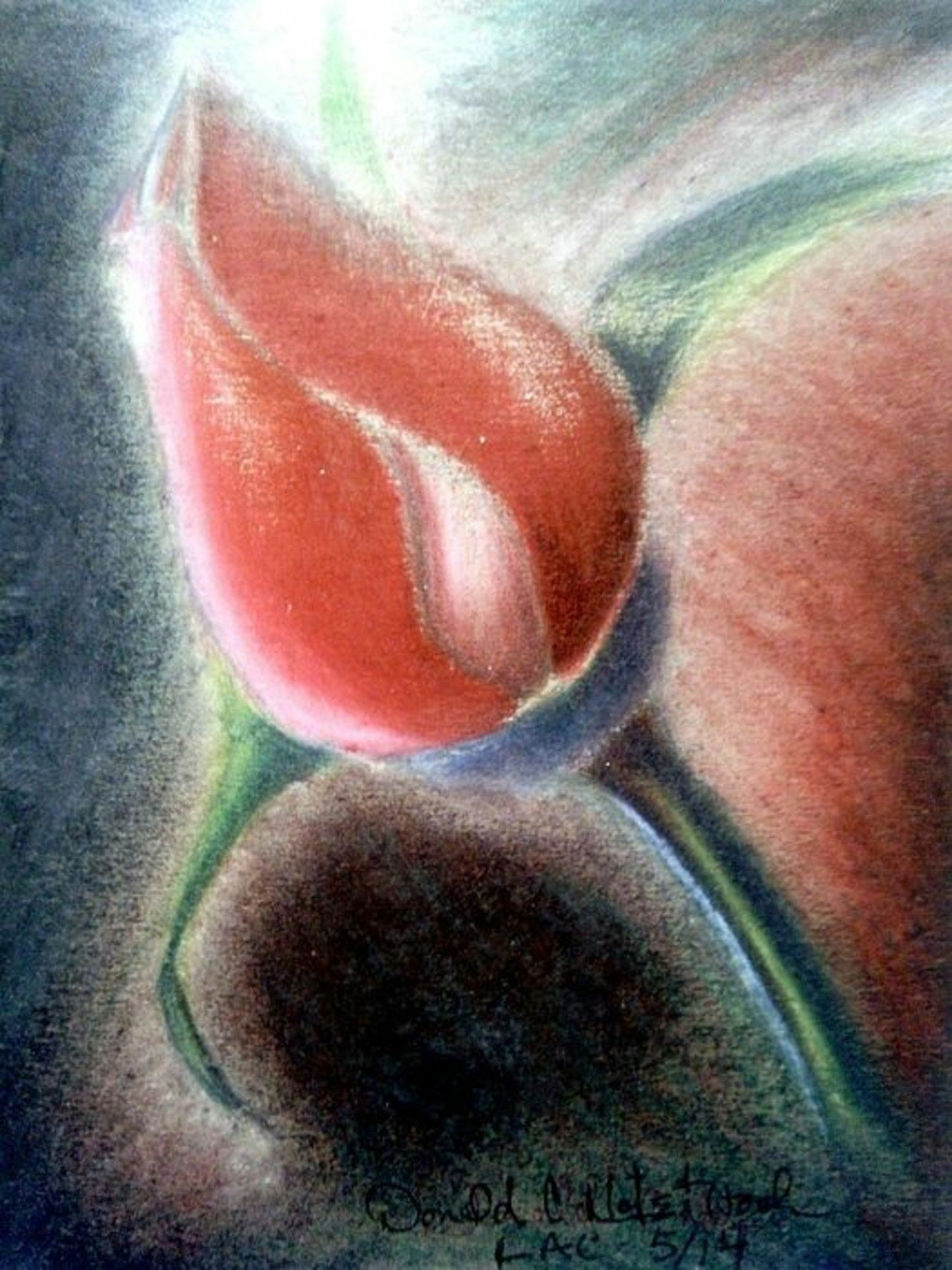Interview
Donald "C-Note" Hooker
Donald "C-Note" Hooker is a poet, playwright, performing artist, award winning visual artist, and is known as the King of Prison Hip Hop. His works have either been exhibited, performed, recited, or sold, from Alcatraz to Berlin. In 2017, Google Search ranked him first in their search results, as both America's, and the world's most prolific prisoner-artist.
What is your background and how did you start your journey in the art world?
“My name is Donald Oliver Hooker, but everyone calls me C-Note, and that gets written out in text as Donald "C-Note" Hooker. I was born inside of the Hollywood Presbyterian Hospital in Los Angeles, California, but was orphaned at birth. I was adopted as a baby by a wonderful African American couple who are now both deceased. When my parents divorced at the age of thirteen, my after school curriculum became fighting gang members. Now, I came from a very structured family, and a good home, meaning, being involved in the Boys Club and youth sports leagues. So, when I was having these problems with these gang members, I was pretty much kicking their butt. But there were just too many of them, they would keep coming and coming. Now, these gang members were coming to my home, in my neighborhood, and none of the other kids in my neighborhood had my back, nor the sports league kids. So, I looked around and said to myself, "These gang members have all the cars, girls and money," and as the old saying goes, "If you can't beat them, join them." And that's how I got involved with the Crips.
The divorce changed the family dynamics as far as home supervision and income. I started getting in trouble with the law because I wanted to have access to things I couldn’t afford and didn’t belong to me, such as boosting the latest designer sweatsuits, like Sergio Tacchini and Adidas that were being made popular by such 80s icons as LLCoolJ and Run DMC. In 1997, at the age of 31, I was convicted in the Los Angeles County Superior Court for pulling out a knife to prevent a homeless man from following me in downtown L.A.'s Skid Row District. It was a third strike and I received a sentence of 35 years to life. I began the millennium, Y2K, in solitary confinement as the result of a pre-thanksgiving riot, between African American prisoners, and prison guards at a nearly all white prison in the Sierra Nevada mountain range. Later, it would be widely reported in the news, that the California Inspector General would file a report deeming the prison racist. So I have all these rap lyrics, I've been writing poetry since I was a teen, and I am wondering what to do with them. Do I send them to Death Row Records or some other record label, and if so, what will they do with them, such as throw them in the trash, or use them and I don't see any money from that use. I thought to myself, "A picture has a thousand words," and decided to communicate through visual art.
Later, I would learn that poetry and painting were sister arts. Poets painted pictures through words, and painters told stories through paint. Mind you, I was 34-years-old and did not know how to draw. My mother had passed away and left me nearly $15,000, to which I had spent a considerable amount on art books. My favorite art is European Renaissance religious art. When I tell people that, I am going to get some eyebrows raised, because in the Black community, you're not supposed to be into white culture like that. The whole derogatory saying in the Black community, "You talk white," in other words, you're not being black. Being exposed to the masters, such as Leonardo da Vinci, Raphael, Titian, Michelangelo, and the list can go on, had a profound effect on me. Seeing some of the greatest and beautiful works of art, but being surrounded in living quarters that were very drab was psychologically traumatic. So eventually, I would just transfer my hustle from getting exposure as a writer of raps to a painter of pictures.”
What does your work aim to say? Does it comment on any current social or political issues?
“My work doesn't aim to say anything, because that means work, that means slavery, because it's for a purpose. I just want to create for the purity of creating. On the other hand, I am always being intentional in the work I create. Let's say I am going to be in an exhibition, then I usually create a work that reflects the theme or the name of the exhibition, and quite often title the artwork after the exhibition. But I most definitely do social commentary work that has gotten recognition all on their own. I've been primarily drawing since 2000, and created my first work in 2009, "My Dilemma." In 2016, I created my first political work, "Black August - Los Angeles." I donated Black August - Los Angeles to the Roman Catholic Archdiocese of Los Angeles. Black August - Los Angeles is listed in Wikimedia Commons's extensive Library, as one of only 12 artworks in its Black Cultural Archives, and is featured in the Wikipedia article, "Black August (Commemoration)." The 2017, Hurricane Harvey inspired "During the Flood," to which I intentionally created as a Public Service Announcement (PSA), regarding awareness to future prisoner fatality exposure due to natural disaster flooding, was used by grassroot organizations and individuals during Category 5 and 4 Hurricanes Dorian and Ida for prison evacuations. It was also featured in Mutual Aid Disaster Relief's zine, "Prisoners In Disaster: Legacy of abuse, exploitation, and endangerment of prisoners and disaster."
In July of 2017, I created the drawing "Incarceration Nation," a PSA for the August 19, 2017, Millions for Prisoners Human Rights March. It was for a march in Washington DC, across the United States and the globe. Incarceration Nation has since become America's premier artwork on mass incarceration. Incarceration Nation was featured in the fashion line "Mercy." A fashion line created in 2020 by Mackenzie Stiles, a senior fashion design student at the Columbus College of Art and Design, for her undergraduate thesis. It was the first time in the 144-year history of the CCAD, a student incorporated prison art into a clothing line design. Covid-19 health restrictions in the spring of 2020, prevented the 2020 CCAD Fashion Show, which would have marked a historic moment in the history of the Catwalk, by becoming the first time fashion models would have walked the runway in outfits crafted using prison art.
In 2021, the outdoor art exhibition (Oct. 17 - Nov. 16, 2021), "Look Up!", featured Incarceration Nation as a billboard art installation. Curated by Anna D. Smith of the Silicon Valley based Anna D Smith Fine Art and Real Estate Broker, It was the first time a prisoner in the United States had one of their artworks to be featured on a billboard. The exhibition led to the Better San Jose Peaceful Rally. A rally held on Tuesday, November 2, 2021, from 1 p.m. to 3 p.m. at 861 West San Carlos, San Jose, California, at the Incarceration Nation Billboard Art Installation. The rally addressed issues, such as San Jose's homeless youth and returning citizens, the power of Education through High School Graduation, Trades, and University Degrees, and the lack of a credible response from local elected officials, from San Jose Mayor, the San Jose City Council members and the Santa Clara County Board of Supervisors. Incarceration Nation has been featured as the lede image in several digital articles and is featured in the Wikipedia article, "Prison Art." In 2018, I created the Paintoem (painting + poem), "Today We Are Sisters." The paintoem was created to stir a reparations movement for providing California women prisoners with reparations who were forcibly sterilized.
In 2017, I heard a news story on the local public radio station regarding California's forced sterilization history and that an active search was being done to find these victims and to give them reparations. From 1909, until the law was repealed in 1979, the State of California had a forced sterilization law. It inspired Nazi Germany to create one of its own. The target of California's forced sterilization law were people with Spanish surnames. After the law was repealed, California was secretly forcibly sterilizing its women prisoners. What spurred me into all this as an artist, were these women prisoners were not a part of the people the government were searching for to provide reparations. Today We Are Sisters is about an agreement between Pro-Life advocates, and Pro-Choice advocates to come together to fight for the end of California to forcibly sterilize its women prisoners, and to provide them with reparations. In 2018, I donated the drawing to the California Coalition for Women Prisoners (CCWP). That same year, and every year thereafter, the CCWP went to the state capitol to demand an end to the practice of forced sterilization and to provide reparations. In 2020, film producer Erika Cohn released "Belly of the Beast." It exposed a history of forced sterilizations of female prisoners in California's prisons. The winter of 2020, saw the release of Free Virtual Art Exhibition (1-Artist; 1-Subject; 21-Works), which featured 21 of my artworks related to the incarceration experience. It concluded with Today We Are Sisters. Shortly thereafter, California legislators would pass a 7.5M reparations bill for these women prisoners. California Governor Gavin Newsome signed the bill into law, and this December 31st is the cutoff date to file an application, so now I am working with others, including fellow artists to raise awareness regarding this deadline.”
Do you plan your work in advance, or is it improvisation?
“Studies are improvisational that later become viable commercial art. In other words, a mere sketch, an incomplete drawing has a high market value. But as far as creating an intentional finished work, that is completely planned, with multiple artistic viewpoints from a plain line drawing, a black and white shaded version of the line drawing, to sketched colored renderings. Let's not forget aerial and linear perspectives. Leonardo da Vinci taught me that an artist must do and know everything. So, I do cloudscapes, landscapes, seascapes, still life, and figure drawings/paintings.”
Are there any art world trends you are following?
“I started in the 2010’s to pay attention to graffiti and street art. Later, I would learn that the American graffiti movement was birthed inside prison. I view street art as legalized Graffiti. The NFT craze of this decade. I would later learn from my art broker, Anna D. Smith of Anna D. Smith Fine Art and Real Estate Broker of this classification of Contemporary art called Underground. According to the Tate Museum, “Now-a-days the term underground art is used to describe a subculture of art, like graffiti art or comic strip art. Since the late 1990s, the internet has become a forum for underground art thanks to its ability to communicate with a wide audience for free and without the support of an art establishment.” See Underground art – Art Term | Tate Based upon the Tate Museum's definition of underground art, Anna D. Smith has built an entire art brokerage firm on the Contemporary Underground art genres of Graffiti, Prison art, Street art, Comic Strips, Graphic Novels, and Digital art, which includes NFTs. In September of 2023, she self-published on Amazon, her seminal work, "Anna D. Smith Fine Art and Real Estate Broker: 2023 Underground Art Market Report." So those are the art markets I am keeping an eye out for, especially since Prison art is a part of this subgenre of Contemporary art. According to Anna D. Smith in her book, 2023 Underground Art Market Report, Underground art is 10% of the Contemporary art market and growing.”
What process, materials and techniques do you use to create your artwork?
“I came up in the world of dry mediums, the pencil, the pen, colored pencils, chalk, pastels, and charcoal. I am not a painter, but I have paintings in acrylic and watercolor. But my level of proficiency with the colored dry mediums, very highly mimics painted works.”
“I just want to create for the purity of creating. On the other hand, I am always being intentional in the work I create.”
What does your art mean to you?
“A chance to leave a mark on this world, hopefully after I pass away. Unfortunately, it is wishful thinking that lacks a conscious rational. Since death, I am assuming, has no conscious state for the formerly living. So I am trying to get it now, while the getting is good. In other words, I want to be a highly commercially successful and respected artist now, whilst I am still amongst the living. Now that's on the material side of art. But on the immaterial, a deep moving interaction that you can feel, but just can't quite grasp what it is your feeling. In other words the Source of that emotional stirring.”
What’s your favorite artwork and why?
“My favorite artwork is Colored Girl. I did it in 2009, and I am holding onto it, because I hope to have it donated and exhibited at the National Museum of African American History and Culture, also known as the Blacksonian, as it is a Smithsonian Institution museum located on the National Mall in Washington, D.C. From the African American perspective, I don't care about anybody else's perspective, "When have we ever been free?" After the Civil War, the South reinstituted a form of slavery known as the Black codes. The Black Codes were a set of minute infractions that allowed sentencing to convict labor camps that would lease out this labor to rebuild the South. While these minor infractions were racially neutral, they were primarily enforced against African Americans. So-called loitering and not having a job will get you put in one of these labor camps. So slavery as an institution, went from a private enterprise to a public enterprise. The 13th Amendment to outlaw slavery in the United States, has an Exception Clause, those convicted of a crime, can legally be enslaved. Because this new slave master, the government, had no direct financial stake in the enterprise, the people who ran the enterprise treated these Black souls and their labor far worse than any plantation owner. Now I am a victim of a widely known American phenomenon known as mass incarceration. African Americans are six times as likely to be imprisoned than any other ethnic or racial group. African Americans have the highest incarceration rate per 100,000. Now why is that? Again, this is from the African American perspective, some sort of en masse bondage has always been pervasive as a part of the African American experience in the United States. Whether it was the concentration camps that held the Jews, or the internment camps that held the Japanese, art was being created. People who have found themselves in such circumstances have always created drawings, and those drawings have always been highly prized to those particular communities. So as I tell the story around Colored Girl, and where the drawing was created, inside prison, as prison, slavery, or whatever you want to call it, some form of en masse bondage of African Americans has always been prominent in African American life.
In 2022, California Governor Gavin Newsome refused to drop the Slavery Exception Clause out of the California Constitution. The advocates to remove the clause were Black people. So that's the Black experience in America, where we cannot even make a moral appeal to drop the Slavery Exception Clause in the most liberal state in the union. Colored Girl is a very significant piece, for one, it’s a very beautiful piece. It is a piece, and its beauty was made by accident. In other words, I have no clue how it came about. I work in a medium that doesn’t get recognized, I work in wax. So, I put all these different kinds of wax together and different formulae to dissolve the wax on paper. I had a model. A picture out of a magazine. But I was not confident as an artist, and I'm still not, so I don’t want people to compare my finished products to the models or images that I use. The finished product I called “Colored Girl.” It clearly was a coloration of something, of a woman. But the word “Colored,” though it is a pejorative today, was once known as the desired description that African Americans preferred to be described as. “Colored,” “Negro,” “Black,” these were all terms that African-Americans themselves demanded of the press and white audiences; this is what you call us. An example would be W. E. B. Dubois NAACP. It was originally called the National Negro Committee. Booker T. Washington and other famous black activists before him, demanded that whites call us “Negroes.”
So, three years after founding the National Negro Committee, W. E. B. Dubois changed the name to the National Association for the Advancement of Colored People. That’s proof enough that blacks demanded that they be called “Colored.” So “Colored Girl,” what is that? Any black girl, and that’s pretty much the response that I had gotten from this artwork. It’s funny, because I used a famous person for this piece, but for my own insecurities I never named the person in this piece and all sorts of Blacks swear on a stack of Bibles they knew who this person was. I would hear the names “Vanessa Williams,” “Janet Jackson,” “Eva Pigford,” all across the spectrum. When Blacks see Colored Girl, when I show them the original, they just get animated. They just light up. There is this spiritual thing that goes on, we begin to communicate telepathically with one another. African Americans have a general complaint that there is a dearth of positive images of them, so there is this silent communication between me and others that this is what that is. So an accidental discovery, “the artwork,” and the title, does what it is intended to do, any “Colored Girl.””
Have you had any noteworthy exhibitions you'd like to share?
“These exhibitions are extremely dear to me, and because I know the curators, I don't want to leave out any names. The most important, but they all are important is Leslie Lakes. Leslie was the founder of Prison Art Touching Hearts (PATH). At the last minute she allowed me to participate in her art exhibition Art Escape at Alcatraz. At that time, former Chinese prisoner, artist, and dissident, Ai Wei Wei was ranked first in the Google Search query, "Who is America's most prolific prison artist?" I was ranked second for that query. How a Chinese national would be listed first by Google was perplexing to me. However, he recently had an exhibition on Alcatraz while under house arrest in China. It was a wonderful exhibition. What Leslie had provided for me, was an opportunity to follow in the path of the great Chinese artist, and thus, maybe, change those Google Search Engine results. I follow the commercial career paths of mainstream artists, especially of those in whom I can readily defend as coming from the world of Underground art, such as Banksy, and Jean-Michel Basquiat, but it is Ai Wei Wei in whom I pay the most attention too. He's a social justice artist just like me, and he's rich, and I'm poor. I don't mean it like that, but he has gotten wealthy from his works of art, for being a social justice artist, and that's what I want. I don't want to enjoy the pleasures in life as a poor person.
The next curator would be Silicon Valley fine art and real estate broker Anna D. Smith. Anna represents me, and she curated two of my works during one of the toughest times for the entire art world, the Covid-19 pandemic. During the pandemic, galleries had to shut down, museums had to shut down, and the public had no real world public experience with art. It was the boldness of Anna, since the public could not come indoors to experience art, she took the art outdoors, so the public could experience art. During the final week of my billboard exhibition, "Look Up! 2, Hope & Beauty, saw the highest recorded deaths of the new variant strain Omicron. The pandemic was a major disruptor in the creative space. That's what Free Virtual Art Exhibition (1-Artist; 1-Subject; 21-Works) was all about, reclaiming our space as artists. Taking back from the virus, what it had taken from us. Another virtual or online exhibition I was a part of at the time was Art on Abolition, an online art exhibition, Sept 1 - Dec 31 2021. It was curated by Freedom and Captivity. Freedom and Captivity is a United States grassroots organization based in the State of Marine. The exhibition had three artistic goals, "What does abolition look like, sound like, feel like?" Art on Abolition included works responding to this prompt juried from a national open call. It featured over 70-works from over 40-artists.
My very first exhibition has to be mentioned, curated by professor of Art, at the University of California, San Bernardino (UCSB), Annie Buckley. Through the Wall: Prison Arts Collective, was held at the CB1-Guest gallery in Downtown, Los Angeles, May 14th - 29th. The exhibit consisted of artists from two men's prisons, and one women's prison, and is the first of its kind in the State to have exhibited women prisoners alongside the men. Unfortunately for the women, all their works were being exhibited anonymously. These prisons were the California Institution for Men (CIM), the California State Prison, Los Angeles County (CSP-LAC), and the California Institution for Women (CIW). The exhibition featured my 2014, drawing, "Mprisond." I've been in over a dozen exhibitions, the vast majority of them social justice related. I'm just too pressed for time right now to give them the shout-outs they deserve. My work has been featured in three art books, my 2014 artwork Mprisond is featured in Through the Wall: Prison Arts Collective, 2016, ISBN 978-1-36-721324-1; my 2015 artwork Colored Girl in Burgundy is featured in Anna D. Smith Fine Art and Real Estate Broker: Underground Art Market Report, ISBN 9798859967469; and my 2021 artwork Paula Picassa is featured on the cover of the coffee table book Art for Redemption. ”
Website: www.c-note.org
Brush Bio: www.brush.bio/c-note

